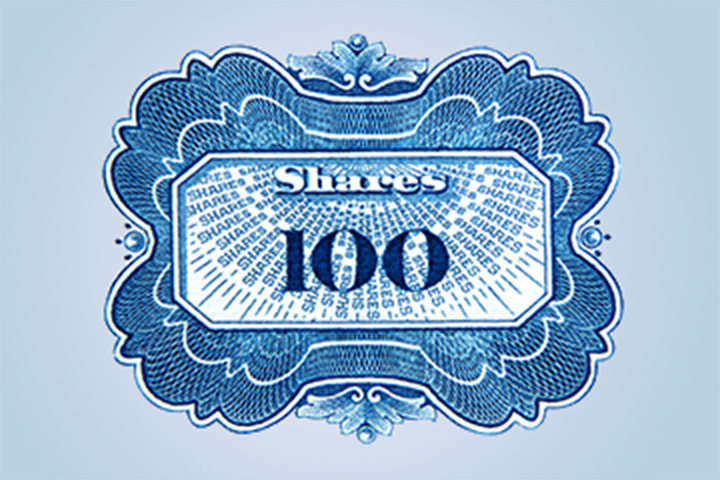It's not timing the market, it's time in the market

Keytrade Bank
keytradebank.be
September 04, 2025
(updated October 17, 2025)
2 minutes to read
Buying a share at rock bottom and selling it again at its highest point: for some investors, it's the ultimate dream; for others, it's a recurring source of frustration. Because how often does such perfect timing actually happen in practice? According to the above stock market adage, rarely if ever, because it's all about time and faith in the market.
In layman's terms
"It's not timing the market, it's time in the market" means that investors should keep a cool head at all times:
- You don't have to beat the stock market by repeatedly entering or exiting it at the right time.
- Your return will depend much more on how long you continue to invest than on when you enter.
- Those who invest in the long term with patience usually do better in the long term than those who actively try to time the market.
Who said it first?
It is not certain who coined this stock market adage. However, some of its early proponents and supporters are perhaps the world's most famous investor Warren Buffett, American investor Peter Lynch and stock market analyst Kenneth Fisher. Today, this mantra has become so ingrained that it is repeated all over the world by asset managers, investment advisors and stock market gurus.
Is that really how the stock markets operate?
There is often a huge gap between theory and practice. Or, as Peter Lynch himself so aptly put it: "Everybody in the world is a long-term investor until the market goes down." Many investors say they can keep a cool head until they witness the first dip. As a result, the stock market is a continuous mix of impulsiveness and steadfastness. It is up to you to choose your own tactics.
The S&P 500 Index and the risk of missed days
This expression seems to be supported by real-life figures. The following example is about those who in the past twenty years invested in funds tracking the S&P 500 Index, a stock market index of 500 leading listed US companies:
- The example is about those who invested 10,000 dollars on 3 January 2005.
- Those who trusted the market and held on to their investments until 31 December 2024 achieved a return of 71,764 dollars.
- Those who missed the best thirty trading days in the same period because they timed the market wrong earned an average of 12,498 dollars. This means they missed almost 60,000 dollars. In other words, the more bad timing, the more return you will see melting away in the long term.
Is it worth a try?
Staying put instead of constantly trying to beat the market may seem a bit boring, but it usually offers more peace of mind and higher returns.
| empty-header | empty-header |
|---|---|
Time in the market | Timing the market |
You develop a calm, patient investment strategy. | You learn to experiment with different investment strategies. |
You benefit optimally from the compound interest or dividend effect. | You may even develop a sixth sense for approaching stock market reversals. |
You avoid repeated transaction costs and tax on short-term gains. | If you turn out to be a pro, you may be able to achieve attractive short-term gains or limit potential substantial losses in the event of sharp price falls. |
Expert insight: "There is no perfect time to start investing."
Danny Reweghs is a stock market analyst, Director of Strategy at Trends Beleggen, and (co-)author of the book 'Haal alles uit uw beleggingen' (Get the most out of your investments) and various other publications on this subject. He has been one of the most experienced voices in stock market analysis in Belgium for more than thirty years.
"This stock market adage is worth a place on the wall above my bed. Timing the market is virtually impossible. It requires you to be right twice: once when you sell and then again when you buy the stock back. And that is the most difficult thing there is. Even the world's best and biggest investors still get this wrong. What does work is patience, discipline and a gradual entry. Look at Warren Buffett. He built most of his fortune after the age of 65, which is when most people wind down their adventures on the stock market."
"Successful investing is a marathon, not a sprint. Many people start with the intention of funding a trip or car within a year or two, but that approach is totally wrong. Yields only really start to accumulate in the long term. The best time to get started is simply now! The perfect moment doesn't exist."
"Don't get carried away by panic, news reports, or ups and downs in the price. Spread and diversify your investments, keep reserves, look beyond the chaos and stick to your plan. It's better to achieve a return of 5 to 10% each year than to risk losing 30% here and there."
Amazon after the dot-com bubble
After the dot-com bubble burst in 2000, the share of e-commerce giant Amazon fell by more than 90% in two years. Many panicked and sold their shares, but those who held on to them or even bought more saw their shares rocket in the years afterwards, especially from 2010 onwards. Time and patience proved to be of great value here.
What should you bear in mind as an investor if you're just starting out?
Long-term investment requires self-discipline. These tactics will help you silence that little voice in your head:
1. Read about the potential risks in advance
Nothing is ever 100% certain in investing and there are always certain financial risks. The better informed you are, the better equipped you will be to make the right choices.
2. Don't be distracted by short-term
Focus on the larger movements, not on day prices. So it's best not to keep looking at your smartphone too much.
3. Use monthly deposits or automatic investments
They automatically spread your entry points without having to time them.
4. Build a broad portfolio
You will be more comfortable if you diversify your investments.
5. Set clear long-term goals
Invest for peace of mind when you retire or to support your children financially in the future, not to get rich quick.
Every investment entails risks such as a possible loss of capital. Before investing in financial instruments, please inform yourself properly and read carefully the document "Overview of the principal characteristics and risks of financial instruments".
Belgians embrace passive investing
Passive investing was our term of the year in 2024. Many Belgians seem to have been won over by this phenomenon of periodically and passively investing via trackers or index funds without constant intervention, exactly as this stock market adage dictates. Many financial institutions now offer simple solutions that allow investors to invest automatically on a monthly basis regardless of market conditions.
From stock market wisdom to life wisdom
"It's not timing the market, it's time in the market" is not a plea for doing nothing. It wants investors to show confidence and patience. Not every decline calls for an exit, and not every peak means it's time to sell. Those who believe in their portfolio and take their time will enjoy their investments for many years to come.


